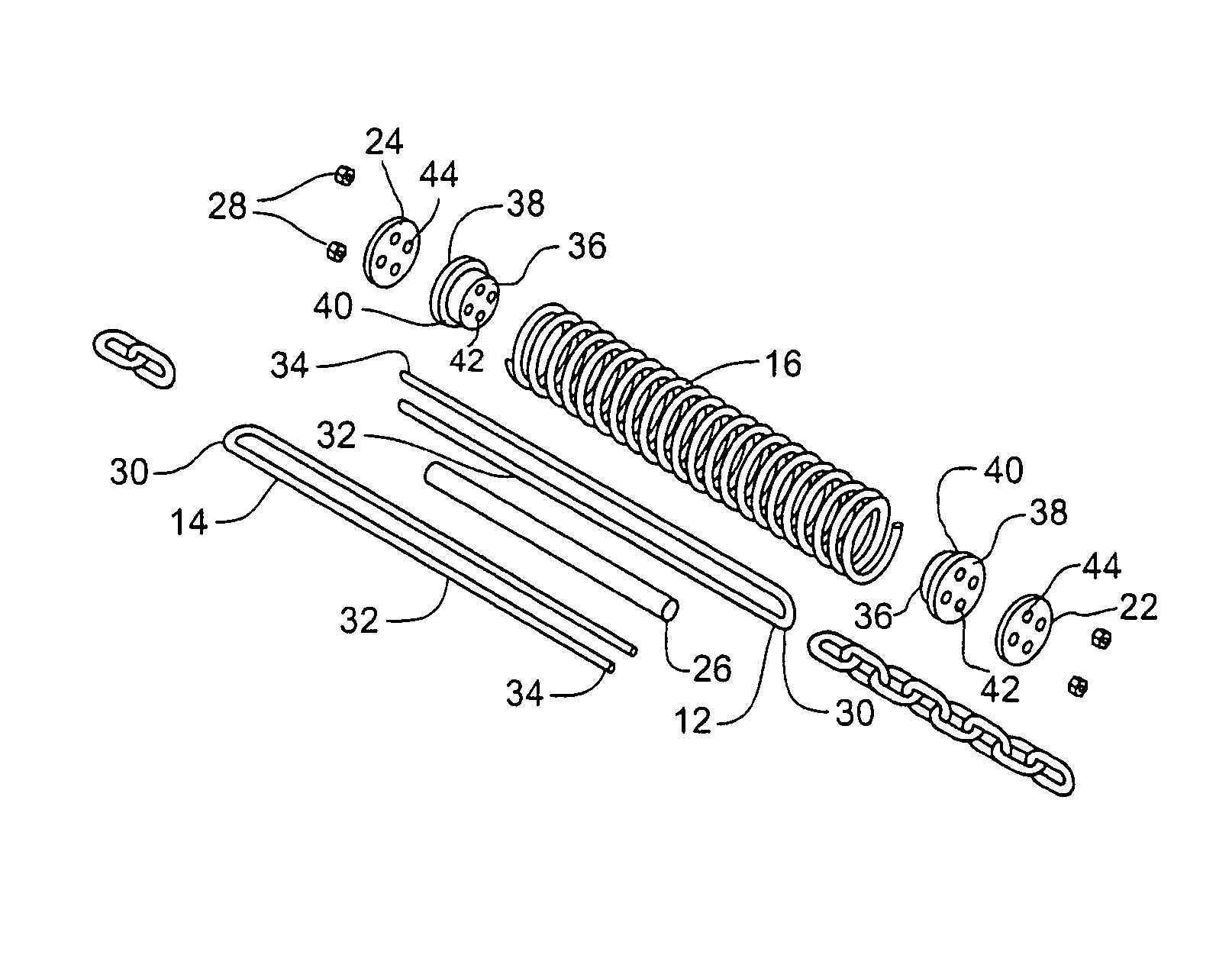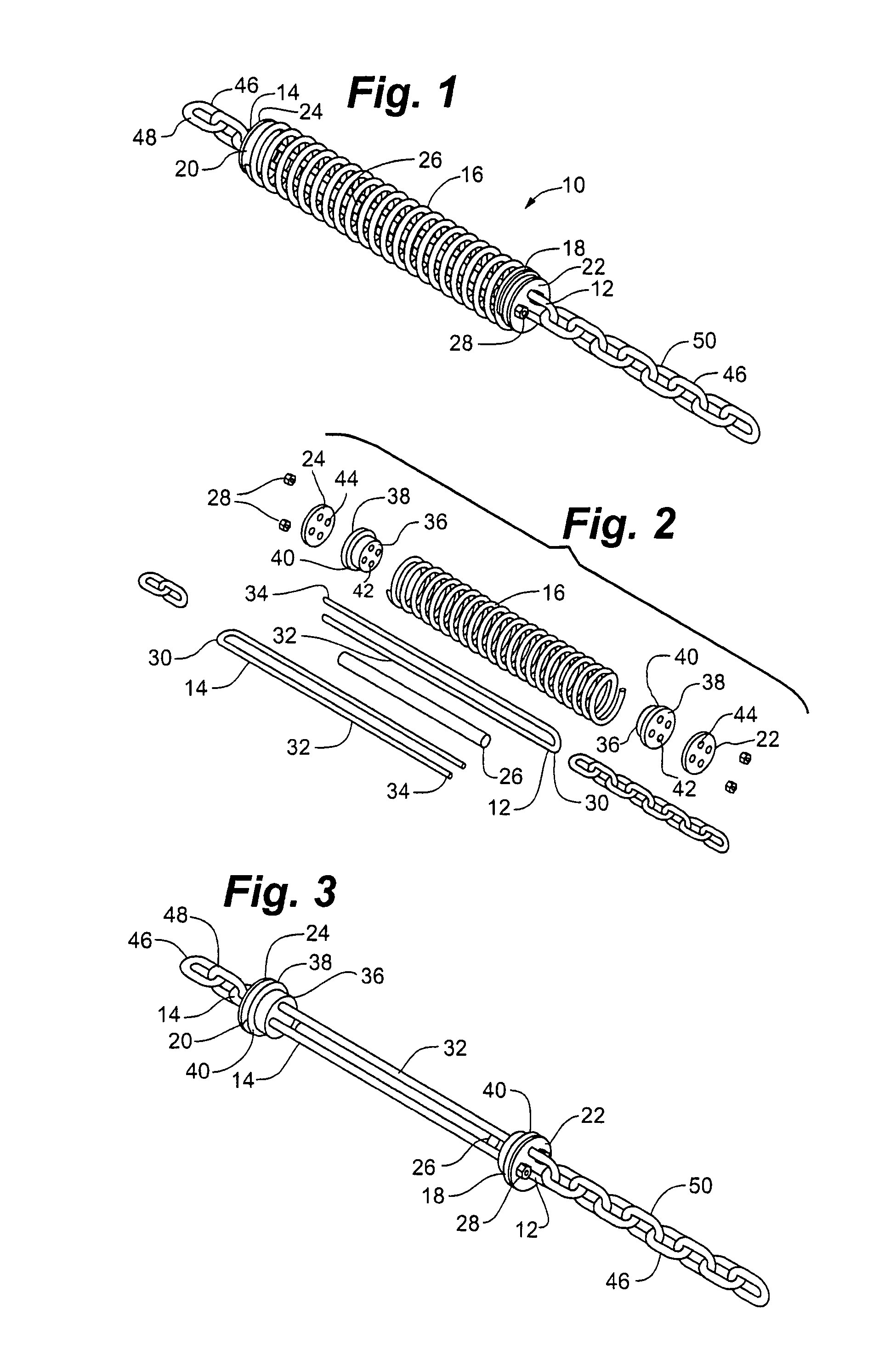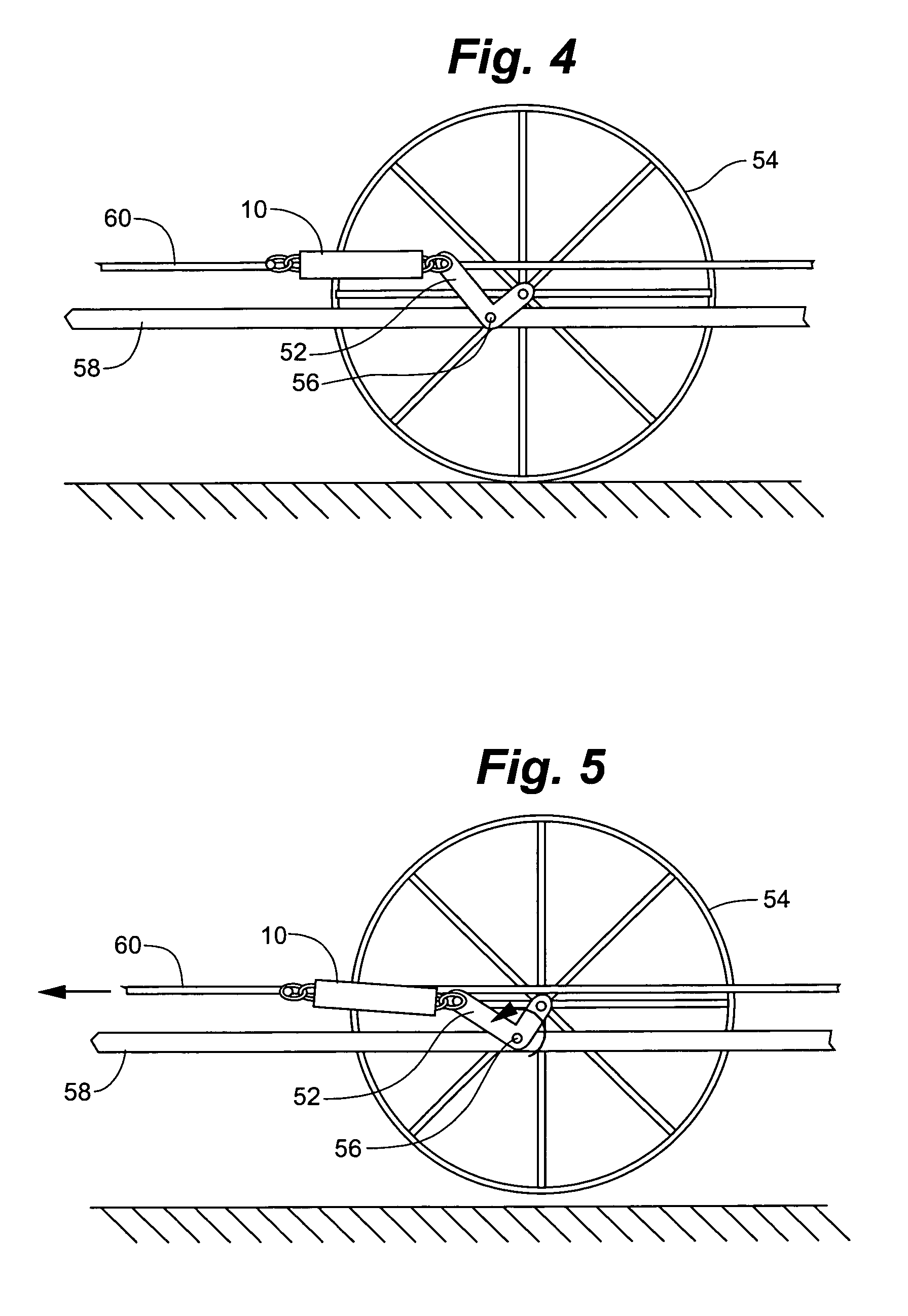Damping spring for use in agricultural implements
a technology for agricultural implements and springs, applied in the field of damping springs for the motion of rake wheels, can solve the problems of loss of production, repeated structural stress on the wheel rake, and inability to absorb shock, etc., and achieve the effect of increasing damping, adjusting the damping degree, and expanding more readily
- Summary
- Abstract
- Description
- Claims
- Application Information
AI Technical Summary
Benefits of technology
Problems solved by technology
Method used
Image
Examples
Embodiment Construction
[0041]Referring to FIGS. 1-3, damping spring 10 of the present invention generally includes first extended U-bolt 12, second extended U-bolt 14, coil compression spring 16, first spring holder bushing 18, second spring holder bushing 20, first spring holder washer 22, second spring holder washer 24, resilient damping member 26, and nuts 28. First extended U-bolt 12 and second extended U-bolt 14 are substantially similar and include U-shaped ends 30, extended shafts 32 and threaded ends 34. First extended U-bolt 12 and second extended U-bolt 14 may be formed from stainless steel or other high strength, corrosion resistant material.
[0042]Coil compression spring 16 is a generally conventional compression spring of a size appropriate to contain first extended U-bolt 12 and second extended U-bolt 14 within its inner diameter.
[0043]First spring holder bushing 18 and second spring holder bushing 20 are substantially similar in construction. First spring holder bushing 18 and second spring ...
PUM
 Login to View More
Login to View More Abstract
Description
Claims
Application Information
 Login to View More
Login to View More - R&D
- Intellectual Property
- Life Sciences
- Materials
- Tech Scout
- Unparalleled Data Quality
- Higher Quality Content
- 60% Fewer Hallucinations
Browse by: Latest US Patents, China's latest patents, Technical Efficacy Thesaurus, Application Domain, Technology Topic, Popular Technical Reports.
© 2025 PatSnap. All rights reserved.Legal|Privacy policy|Modern Slavery Act Transparency Statement|Sitemap|About US| Contact US: help@patsnap.com



